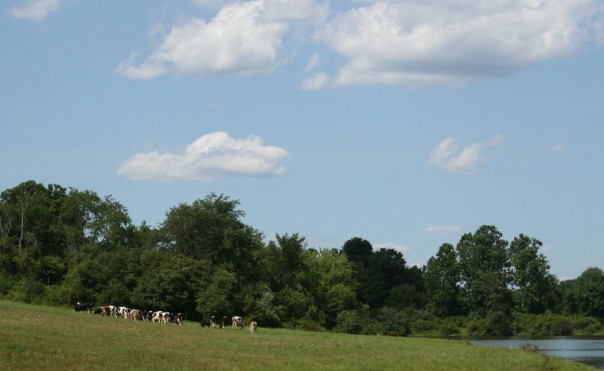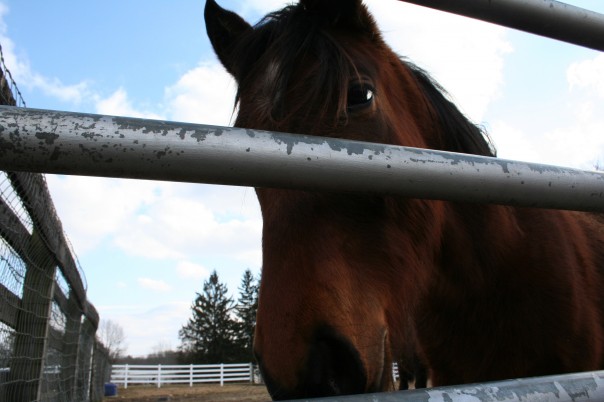Resources For Farm, State, Housing Hit By ‘Sandy’
Weather is a fact of life. As agriculture relies on climate, land and water to thrive, production and well being can be impacted by powerful storms.
After any major weather storms in or when there's flooding or ice, it is important for livestock producers to use caution when assessing damage on a farm and around their livestock to protect their health and their animals, according to the Connecticut Department of Agriculture.
Livestock can be exposed to a number of hazards created by flooding; it is recommended that livestock owners observe their animals daily to monitor for changes in health or behavior in any weather. If multiple losses or unusual disease occurrences should happen, they should be reported to the state veterinarian as soon as possible at (860) 713-2505.
A few tips: If land is flooded, well water may be contaminated and need testing and treatment prior to use. Inspect all sources of feeds and forages. Watch for molds in the field and in stored feed. Check over pastures, fences and buildings for damage, downed posts or lines and gullies. Double check that all animals are up to date with vaccinations now, if you haven't already prior to the recent storm. Animals that were on flooded pastures are at greater risk of developing respiratory and clostridial diseases.

When in doubt about wholesomeness of feedstuffs contact your veterinarian or University of
Connecticut Cooperative Extension Service at (860) 626-6240. Report farm, home or barn damage to the Federal Emergency Management Agency (FEMA) at (800) 621-FEMA.
Be sure to document and photograph any farm damage.
U.S. Agriculture Secretary Tom Vilsack has announced a comprehensive effort to help USDA-financed homeowners in areas affected by Storm Sandy.
“USDA, working with FEMA and other partners, is dedicated to helping homeowners impacted by Sandy,” Vilsack said. “We are taking steps to ensure that direct and guaranteed USDA home loan borrowers have the assistance and resources they need.”

For communities and residents in the Northeast and Mid-Atlantic: USDA home loan borrowers in Presidential Declared Disaster and surrounding counties will receive a letter that outlines loan servicing assistance. This includes a potential moratorium on payment schedules for up to six months for eligible borrowers. Individuals are encouraged to contact FEMA for information, or access the FEMA housing portal at http://asd.fema.gov/inter/hportal/home.htm. Obtain a Letter of Priority Entitlement at any USDA Rural Development area or state office. This document enables the letter holder to move to the top of any waiting list at an USDA-financed multi-family property. Applicants must pass current screening criteria.
The Connecticut Insurance Department (CID) is providing a dedicated “Storm Sandy” page featuring important resources for consumers, the insurance industry and businesses. Helpful resources include a flood insurance claims tool kit and contact numbers; a link to the National Flood Insurance Program; how to filed a claim and about FEMA funds and Federal aid. A Catastrophe Adjuster Licensing Program was activated Oct. 26, 2012 to help expedite processing. There is an informative PDF available for specifics on hurricane and storm deductibles.
Additional resources include the Connecticut Bar Association disaster hotline and state emergency services. Learn how to find a mobile claims center in Connecticut, or contact the CID if you have difficulty reaching your own insurer, have a claims dispute, or have questions on any insurance-related topic – call (800) 203-3447 or (860) 297-3900 and follow the online options.
A listing of “Sandy” 800-Claims numbers are linked here.
For state-specific information about Hurricane Sandy, contact your state’s department of agriculture – here's the National Association of State Departments of Agriculture link.


